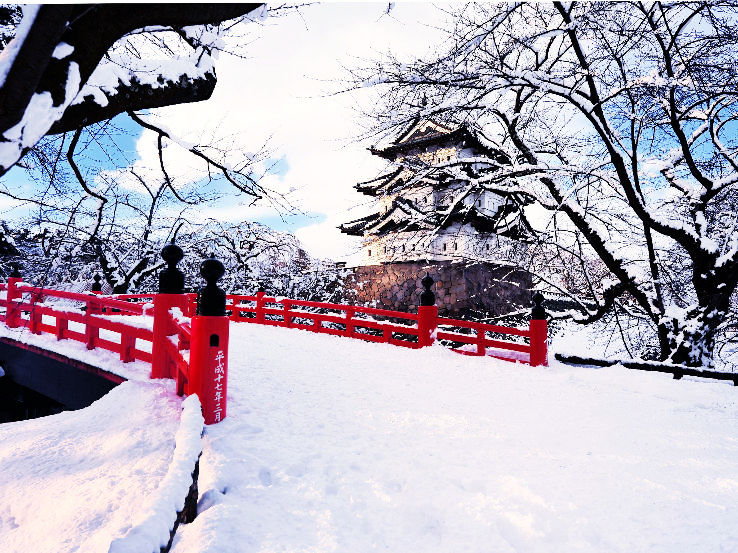Snow means different things to different people. On the one hand, it has the power to turn even the worst scenario into a gleaming wonderland of refracted sunlight and calming sound. On the other hand, it is also capable of turning daily commute into a nightmare of mud-covered roads and slippery sidewalks. The world’s 6 snowiest major cities
In many places, the ever-present global warming means that snow is becoming a rare occurrence; Whereas in others, snow is a way of life that is unlikely to change anytime soon. Here’s a look at the six snowiest cities in the world, based on data collected by AccuWeather.com.
The world’s 6 snowiest major cities
- Syracuse, United States
Sharing fifth place on our list of the snowiest cities in the world is Syracuse, New York, with an average annual snowfall of 124 inches. Records show that the city also occasionally receives heavy snowfall, with an all-time high of 192 inches in a single season. Figures such as these cement Syracuse’s status as the snowiest metropolitan area in the United States, a claim made possible by a combination of various geological factors: the city’s proximity to Lake Ontario and the regular dumping of ice by nor’easter cyclones.
Known as the economic and educational center of central New York, Syracuse is as famous for its weather as it is for its university’s Division I sports teams. The city consistently wins the Golden Snowball Award, a humorous honor bestowed on upstate New York City with the most snowfalls each season. Syracuse has won the award every year since 2003 – except for the 2011–2012 season when Rochester temporarily forfeited the crown. Fellow competitors Rochester and Buffalo qualify as the eighth and ninth snowiest cities in the world, respectively.
- Quebec City, Canada
Tied with Syracuse as the fifth snowiest city in the world, the capital of the province of Quebec also receives an average annual snowfall of 124 inches. Although officially classified as a humid continental climate, Quebec City is no stranger to cold temperatures, with a record winter average of around -34 °F (-36 °C). Snow usually begins to fall in early November and remains on the ground until mid-April. Quebec City celebrates its coldest season with the Quebec Winter Carnival, an additional two-week event that includes parades, winter games, and ice-sculpting competitions.
Throughout the season, Quebec City remains a favorite destination for winter sports enthusiasts, with opportunities for ice-skating, ice-climbing, and cross-country skiing all within easy reach of the city center. There are also several ski and snowboard resorts located less than an hour’s drive away, including Stoneham Mountain Resort and Monte-Sainte-Anne. Quebec City is also famous for its UNESCO-protected Old Town, whose picturesque colonial architecture reflects the city’s identity as one of the oldest in North America.
- St. John’s, Canada
The capital of the Canadian province of Newfoundland and Labrador, St. Johns holds the title of the fourth snowiest city in the world with an average annual snowfall of 131 inches. St John’s adds to this honor a range of other meteorological excellence, including its status as the foggiest, windiest, and cloudiest of all major Canadian cities. The region’s extreme weather results in snow that regularly turns into rain partly through a storm, so that despite St. John’s heavy snowfall, the snow is often slow.
In addition to snow, St. John’s often experiences freezing rain, which causes liquid rain to freezing when exposed to subzero temperatures, covering everything with a thin layer of snow. February is traditionally considered the coldest month, with an average minimum temperature of -16.5 °F (-8.6 °C). Despite St. John’s often inhospitable weather, there are many reasons to visit the oldest English-founded city in North America. When the sun shines, the city’s multi-colored row houses are a sight to behold, while its music, arts, and culinary scene are both lively and eclectic.
- Toyama, Japan
Toyama is the capital of Toyama Prefecture and the third snowiest city in the world. Located in central Honshu on the coast of Japan, the city receives an annual snowfall of 143 inches, despite having a humid subtropical climate. Almost all of Toyama’s snow falls between December and March, with January generally considered the snowiest month. With a record summer high of 103 °F (39.5 °C), Toyama’s winter snow is a phenomenon characterized by its proximity to the city’s coast and its location within Japan’s Snow Belt.
Toyama is traditionally recognized as a center for medicine and pharmaceuticals, and as a convenient gateway to excellent skiing and snowboarding in the Japanese Alps. The city itself is home to many worthwhile art galleries, museums, and historical sites, but the most important attraction for snow enthusiasts is the nearby Tateyama Kurobe Alpine Route. Designed to showcase dramatic views of Mount Tateyama, the sightseeing route is closed from December through early April; However, huge ice walls side the road well into the summer.
- Sapporo, Japan
Located on the northern Japanese island of Hokkaido, Sapporo is the second snowiest city in the world. Each year, the capital of Hokkaido Prefecture (and the fourth most populous city in Japan) sees an average annual snowfall of 191 inches, despite enjoying warm summer temperatures of up to 97 °F (36 °C). Sapporo’s snowy winter climate forms a large part of its international identity. It is known worldwide as the first Asian city to host the Winter Olympics in 1972 and for its annual Sapporo Snow Festival.
Held every year in February, the Snow Festival attracts more than two million visitors from all over the world. It features professionally crafted ice and snow sculptures, all of which are beautifully illuminated at night. The sculptures are an incredible feat of engineering, reaching 50 feet (15 meters) in height. Sapporo’s high snowfall is due in large part to the southward flow of icy air from Eastern Siberia. In addition to its exceptional weather, the city is known as the home of the internationally exported beer brand Sapporo.
- Aomori City, Japan
The colliding winds cause accelerated cloud formation, resulting in heavy rainfall that falls as snow instead of rain due to the city’s cold winter temperatures. In addition to its peak weather, the city of Aomori is known for its sake, seafood, and apple production (the latter during its sunny, temperate summers). Every summer, the city also hosts the Nebuta Festival, which sees its streets lit up with a parade of colorful lanterns. In winter, tourists flock to the ski and snowboard resorts in the nearby mountains to take advantage of the snow.
Similar Articles to World’s 6 snowiest major cities









